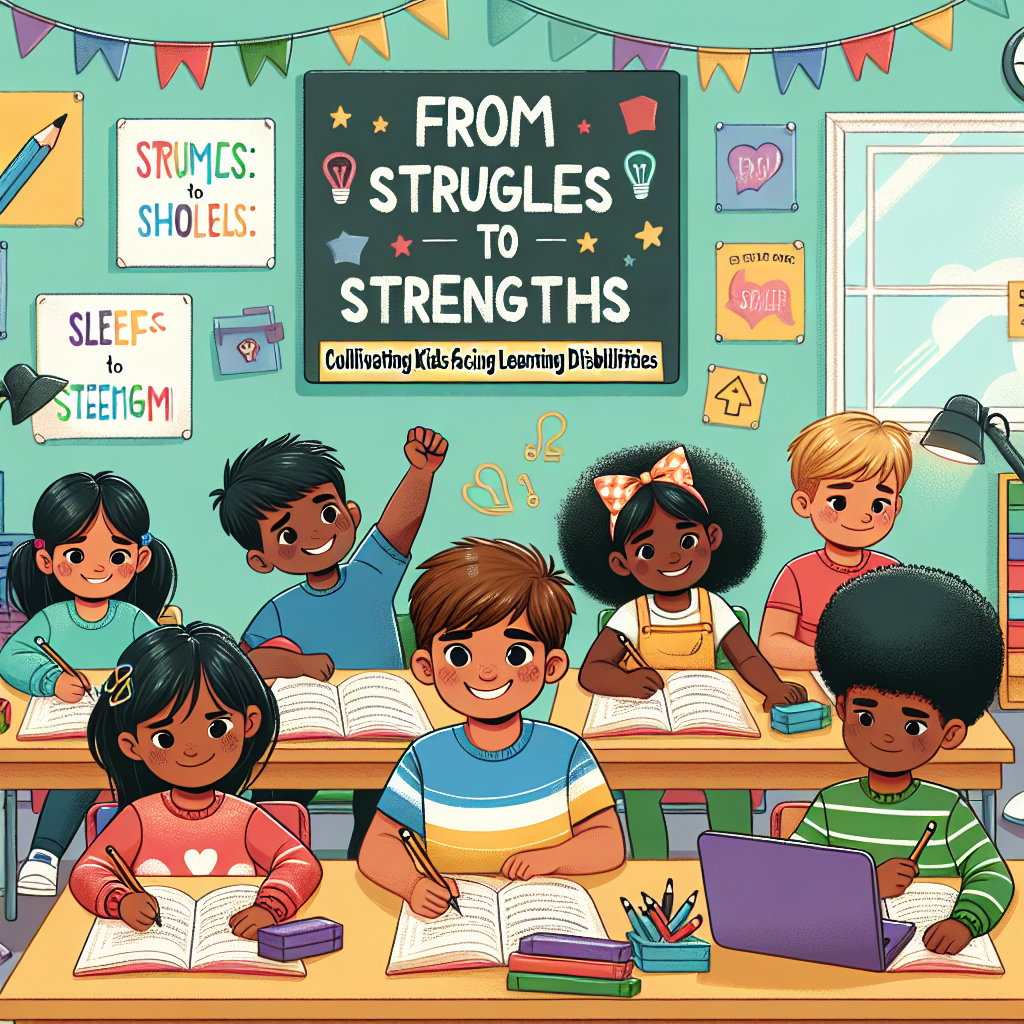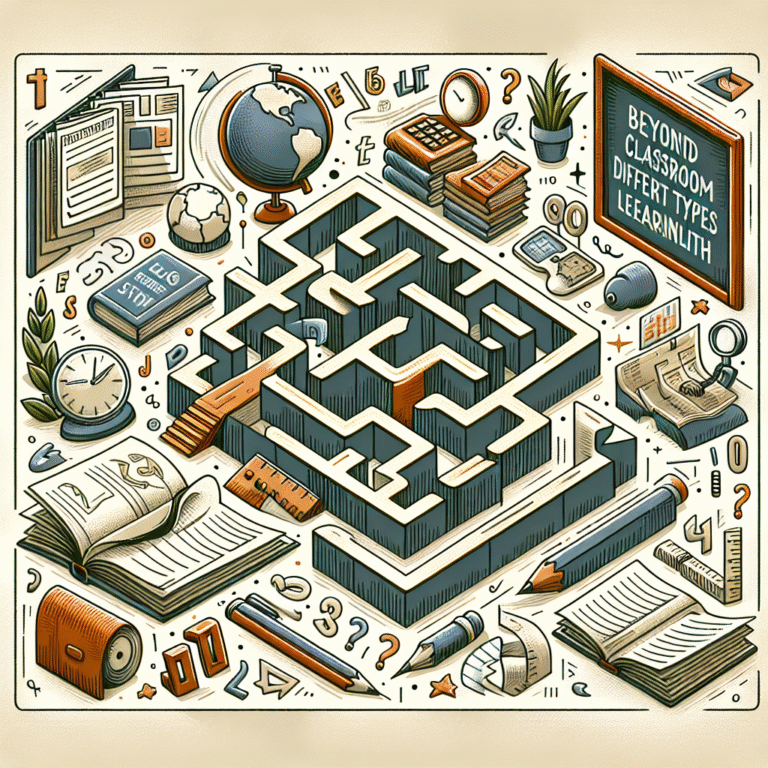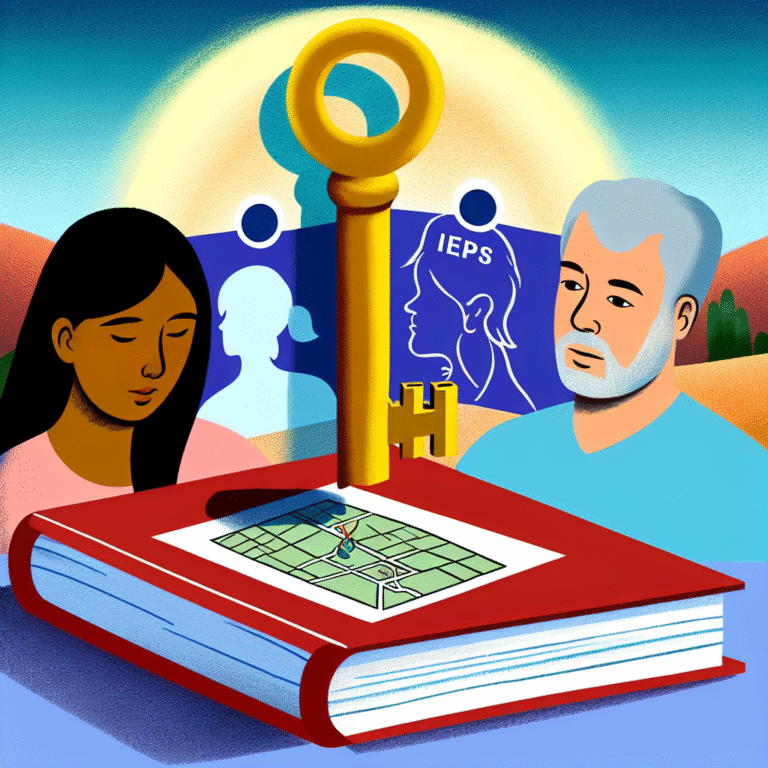
From Struggles to Strengths: Cultivating Self-Esteem in Kids Facing Learning Disabilities
Introduction
Imagine a world where every child, regardless of their learning challenges, is empowered to embrace their unique strengths and capabilities. For many children facing learning disabilities, this vision feels far from reality. Instead, they often battle negative self-perceptions, frustration, and the weight of societal misconceptions. The journey from struggles to strengths is not just a personal endeavor but a collective one—requiring the support of parents, educators, and the community. In this comprehensive guide, we will explore the essential strategies for cultivating self-esteem in children with learning disabilities, aiming to transform their challenges into strengths.
Understanding Learning Disabilities
What Are Learning Disabilities?
Learning disabilities encompass a variety of cognitive disorders that affect a person’s ability to acquire and use academic skills. These can manifest in several ways, including difficulties with reading, writing, math, and social skills. Common learning disabilities include dyslexia, dysgraphia, and ADHD. Recognizing these conditions is the first step in the journey to understanding and supporting children in overcoming their challenges.
The Impact of Learning Disabilities on Self-Esteem
Children with learning disabilities often experience feelings of inadequacy and frustration. They may compare themselves to peers and feel left behind, leading to a lack of motivation and poor self-esteem. This negative self-image can affect not just their academic performance but also their social interactions and emotional well-being.
The Role of Parents and Educators
Creating a Supportive Environment
One of the most crucial components in fostering self-esteem in kids facing learning disabilities is creating a supportive environment. This includes:
Open Communication: Encouraging discussions about learning difficulties in a constructive way helps children understand that their challenges are a part of who they are, not the entirety of their identity.
Positive Reinforcement: Celebrating small achievements and progress, no matter how minor, can significantly boost a child’s confidence. For instance, if a child reads a paragraph without struggling, acknowledging that effort goes a long way.
- Tailored Learning Strategies: Implementing personalized teaching methods that cater to a child’s unique learning style can help them grasp complex concepts better, leading to improved self-assurance.
Case Study: Emily’s Journey
Emily, a 10-year-old with dyslexia, struggled with reading aloud in class. Her parents and teachers collaborated to implement a multi-sensory learning approach, combining visual aids and auditory support. Over time, Emily not only improved her reading skills but also gained the confidence to participate in class discussions. This case highlights the importance of a tailored approach and reinforces the notion that with the right support system, children can thrive.
Building Self-Esteem Through Strength-Based Approaches
Identifying Strengths
One of the most effective methods for cultivating self-esteem in children facing learning disabilities is focusing on their strengths. A strength-based approach emphasizes:
Strength Assessment: Encourage children to engage in activities where they excel, such as sports, arts, or music, allowing them to shine in areas outside academics.
- Skill Development: Teach skills that align with their strengths, providing opportunities for success and reinforcing a positive self-image.
Case Study: Jake Finds His Voice
Jake, an 8-year-old who struggled with math, was encouraged by his art teacher to express his understanding of math concepts through drawing. By creating visual representations of mathematical problems, Jake found that mathematics could be fun and creative. His enthusiasm for art helped him cultivate a new perspective on learning, demonstrating the effectiveness of utilizing strengths to tackle struggles.
Creating Inclusive Opportunities
Fostering an inclusive environment helps children feel valued and recognized for their contributions. Schools and community programs should implement:
Peer Support Groups: Establishing clubs or study groups where children with similar challenges can collaborate offers a sense of belonging and shared experience.
- Mentorship Programs: Pairing children with mentors who have overcome similar learning challenges can inspire them and provide a tangible example of success derived from perseverance.
The Role of Self-Advocacy
Empowering Kids to Advocate for Themselves
Teaching children to advocate for themselves is instrumental in building self-esteem. Skills include:
Understanding Their Learning Disability: Educating children about their learning disabilities helps them articulate their needs and challenges effectively.
- Self-Confidence Training: Engage children in role-playing exercises where they practice communicating their educational needs in a comfortable and supportive environment.
Case Study: Nathan’s Voice
Nathan, who has ADHD, struggled to ask for extra time during tests. With guidance from a counselor, he practiced self-advocacy techniques. Eventually, he approached his teacher to discuss his needs. This empowered Nathan, resulting in improved academic performance and a newfound sense of control over his education.
Fostering Resilience Through Challenges
Teaching Resilience
Resilience is the ability to bounce back from setbacks, a vital trait for children facing challenges. Parents and educators can foster resilience by:
Modeling Hope and Positivity: Demonstrating a positive attitude towards challenges can influence a child’s perception and encourage them to see difficulties as opportunities for growth.
- Encouraging Persistence: Help children set realistic goals and expose them to situations where they must persevere. When a challenge arises, guide them in finding solutions rather than providing immediate fixes.
Case Study: Sophia’s Success Story
Sophia, a high school student with a learning disability, struggled with algebra. After several failed attempts on tests, she felt defeated. With encouragement from her teacher to try alternative studying methods, and a gradual increase in complexity, Sophia learned that persistence leads to success. By overcoming her struggles, she not only bettered her grades but also cultivated a resilient mindset.
Practical Strategies for Parents and Educators
Daily Affirmations and Positive Self-Talk
Incorporate daily practices of affirmations and positive self-talk into your child’s routine. This helps reinforce their value and potential. For example, use phrases such as “I am capable,” and “I learn in my own unique way.” These affirmations can become powerful tools over time.
Utilizing Technology
There is a wealth of educational tools and applications designed specifically for children with learning disabilities. Encourage the use of these resources to assist with learning, providing additional support that caters to their needs.
| Tool | Purpose | Benefits |
|---|---|---|
| Reading Apps | Supports reading comprehension | Interactive and engaging content |
| Math Gamification | Enhances math skills | Fun and interactive learning |
| Speech-to-Text | Aids writing for students with dysgraphia | Eases the writing process |
Conclusion
The journey from struggles to strengths: Cultivating self-esteem in kids facing learning disabilities is intricately tied to the support they receive from parents, educators, and mentors. By focusing on strengths, fostering resilience, and nurturing self-advocacy, we can help children rewrite their narratives from one of struggle to one filled with empowerment and success. Let us commit to creating an inclusive world where every child has the opportunity to view their challenges as stepping stones toward their greatest strengths.
FAQs
What are common learning disabilities?
Common learning disabilities include dyslexia (reading difficulties), dysgraphia (writing difficulties), and dyscalculia (math difficulties).How can I help my child with low self-esteem?
Focus on nurturing their strengths, using positive reinforcement, and encouraging open communication about their feelings and challenges.Are there specific strategies for teaching children with learning disabilities?
Yes, individualized teaching methods, multi-sensory learning approaches, and the use of assistive technology can be particularly helpful.How can I encourage my child to advocate for themselves?
Teach them to understand their learning disability, practice self-advocacy conversations, and reinforce their right to ask for accommodations when needed.- What role does resilience play in overcoming learning disabilities?
Building resilience helps children accept challenges and setbacks as part of the learning process, enabling them to develop perseverance and confidence in their abilities.
By thoughtfully implementing the strategies discussed in this article and fostering an environment of support and encouragement, we can help children with learning disabilities not only face their challenges but also turn them into remarkable strengths. Real change begins with us; let’s make that change happen today.






